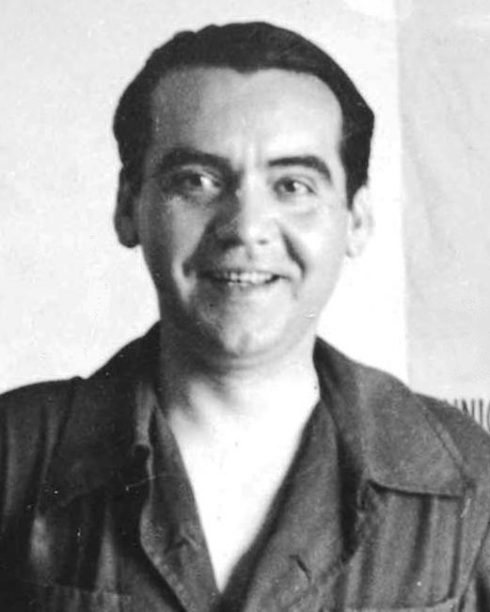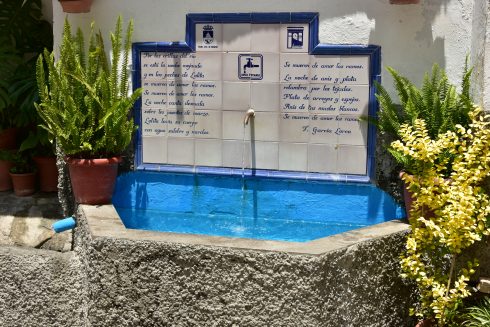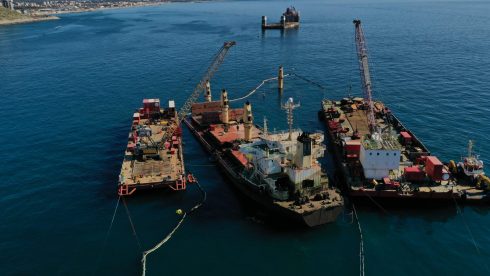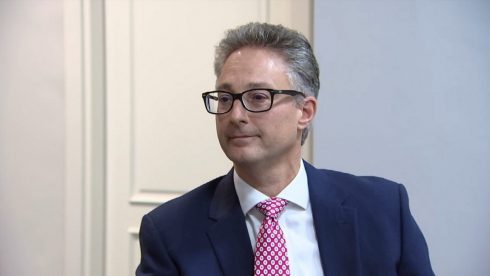JUNE 2023 marks the 125th anniversary of the birth of Frederico García Lorca. One of Spain’s most celebrated literary figures, the influential poet and playwright was born on June 5, 1898, at Fuente Vaqueros – a small, rural town near Granada.
From humble beginnings in the countryside, Lorca was destined for great things. He is famed for his works about Andalucia, spurred by his desire to bring culture to far-flung places and address the rural/urban divide.
The eldest of four children, born to a wealthy landowner and his schoolteacher wife, Lorca lived and worked in many different locations, until the Franco regime assassinated him in 1936.
Many of the locations on the ‘Lorca trail’ can be visited today.



Lorca’s various locations
After their time at Fuente Vaqueros, in 1906, the Lorca family moved to Valderrubio, on the Vega de Granada. This remained their summer retreat until 1925. After 1926, they summered at St Vincente, also in Granada. The rest of the time, the family was based in the centre of Granada, first on the Acera del Darro and, later, on the Acera del Casino.
The Granada connection remained with Lorca all his life. He attended school in the city, and the University of Granada. Although he was a considered an accomplished pianist, he took nine years to complete his degree in Law.
In 1919, Lorca moved to the Residencia de Estudiantes in Madrid, which was his home for a decade, and encouraged artistic pursuits. Fellow students included filmmaker, Luis Bunuel, and great artist, Salvador Dali, who became a close companion and romantic interest.
Despite spending time in Madrid, Barcelona and South America, Lorca never forgot his roots.
Lorca’s works
Lorca is renowned for the 1928 poetry collection, ‘Romancero Gitano’ (gypsy ballads); the 1935 ‘Llanto por Ignacio Sánchez Mejías’ (lament for his famous bullfighter friend, who was gored and killed); the 1933 ‘Bodas de sangre’ (blood weddings); the 1934 ‘Yerma’, and ‘La casa de Bernarda Alba’ (house of Bernarda Alba).
During the early 1930s, Lorca encouraged a second ‘golden age’ of the Spanish theatre. He threw considerable enthusiasm into his theatre group, La Barraca, and won respect as a playwright.
He was also keen on music and drawing. At the behest of his influential companion, Dali, some of his sketches were exhibited in the Dalmau gallery in Barcelona.
Lorca and La Alpujarra
Lorca’s travels through the Alpujarra began in his youth. A 1918 photo shows the 20-year-old on the bus from Granada to Motril, passing through Órgiva. Another image places him beside an orange tree in the municipality of Órgiva.
On the back of the photo, he writes: ‘Naranjo located at an altitude of 2,000 meters. From here I can see Soportújar, Láujar, Vallacar [sic] and Cáñar. I hear the singing of four rivers tumbling down to the olive trees of the Vega de Órgiva.’
From 1924, Lorca’s family spent summers in the Alpujarra. His mother treated her liver complaint with the medicinal waters of the Lanjarón Spa (‘balneario’). Lorca travelled from Madrid to join his family.


While in Lanjarón, staying at Hotel España, he worked on a collection of drawings. He sent postcards featuring the ruined Lanjaron ‘castillo’./
Much of Lorca’s correspondence with the sister of Salvador Dali, Anna Maria Dali, dates to his Lanjarón holidays. This includes the short story, ‘The Mediterranean is One and Indivisible’. The town has since printed his poems on its ‘fuentes’ (springs), on beautiful ceramic tiles.
Lorca later toured La Alpujarra composer, Manuel de Falla, and they discussed mounting a puppet show. They also visited Guadix, on the far side of the Sierra Nevada.
Lorca’s final moments
With the rise of the far right changing the political climate, and stifling liberal Spaniards, Lorca was removed by the Franco regime in August 1936. After a stint in hiding, he was arrested in Granada, taken to the village of Viznar, held captive, and executed.
Although the exact motivations for the killing were ambiguous, Lorca was known for his left-wing political views and activism. He supported the Republicans, and his work frequently criticised the establishment. There was also his sexual orientation, which made him a target for persecution at the time. However, despite the attempt at repression, his work would go on to outlive him.
Where to see Lorca’s legacy
Lanjaron
Lanjaron dedicated 2019 to Lorca. The town has many fountains bearing his poems, the most beautiful of which is in ‘Plaza de Santa Ana’, just off the main street. Don’t forget to visit Bar Rincon de Lorca at Hotel España, which serves great tapas.
Laroles
Between 4-6 August 2023, the Alpujarran town of Laroles celebrates the eighth edition of its cultural festival, ‘Me Vuelves Lorca’. In celebration of the great man, the event features live performances of music, theatre, oration, and comedy. It aims to bring culture to a rural part of Granada (Nevada municipality), just like Lorca would have done. More info at: www.mevuelveslorca.com


Granada
The city has mounted a walking route that takes in sights associated with Lorca. These include:
- The St Vincente country house, now converted into a museum, where Lorca’s family enjoyed summers from 1926 onwards.
- Frederico Garcia Lorca Centro – a cultural institution dedicated to the research of Federico’s life and work.
- ‘El Rinconcillo’ – the traditional restaurant, Chikito, occupies the site of the historic Café Alameda, where intellectuals held the famous El Rinconcillo group. Its heyday was between 1915 and 1922, with members including Lorca, Falla, Lanz and de la Serna.
- Manuel de Falla’s house in Antequeruela Street, near the Alhambra. Lorca visited between 1922 and 1939. In 1962, it was converted into a museum.
- Plaza de los Aljibes – the main access to the Alcazaba of the Alhambra. It has a viewpoint with stunning views of the Albaicín.
- San Nicholas viewpoint – looking over the Albaicin, Alhambra, Darro Valley, the old Granada, and the horizon of the Vega. These views inspired Lorca during his youthful walks.
READ MORE
Exploring Gerald Brenan country: a trip to Yegen in the Alpujarra of Spain’s Granada
Exploring Spain: the search for Lorca’s grave in Andalucia










